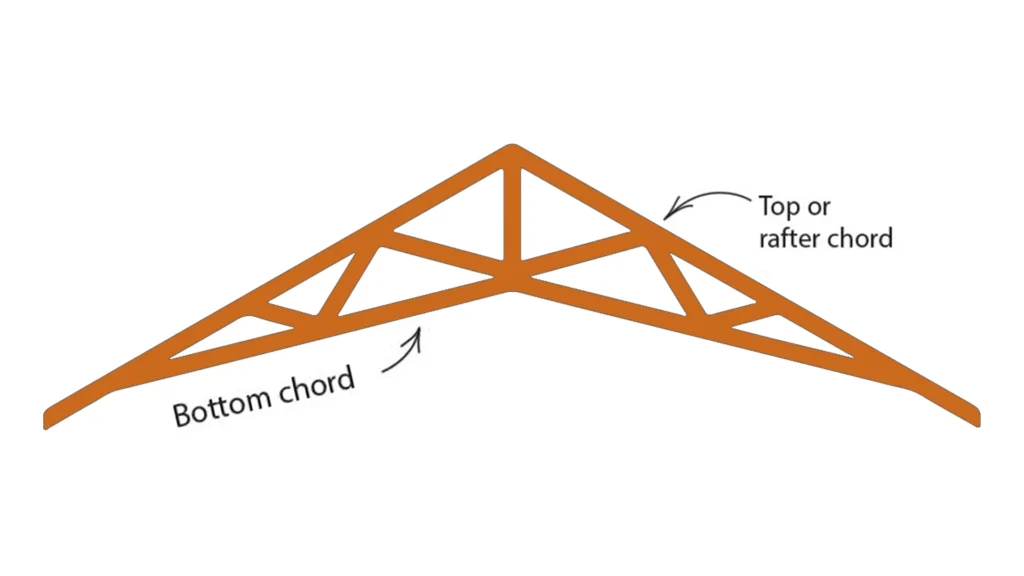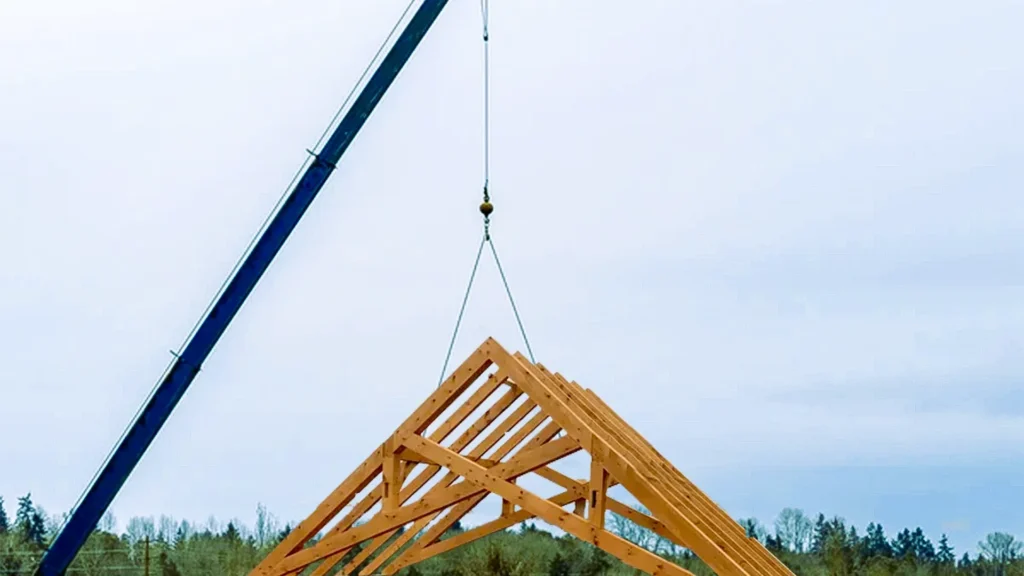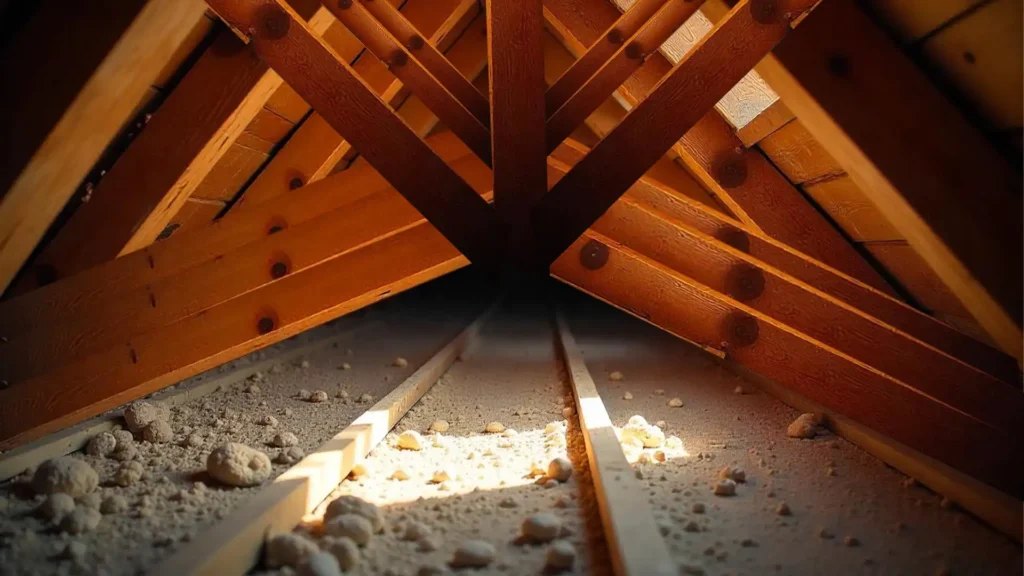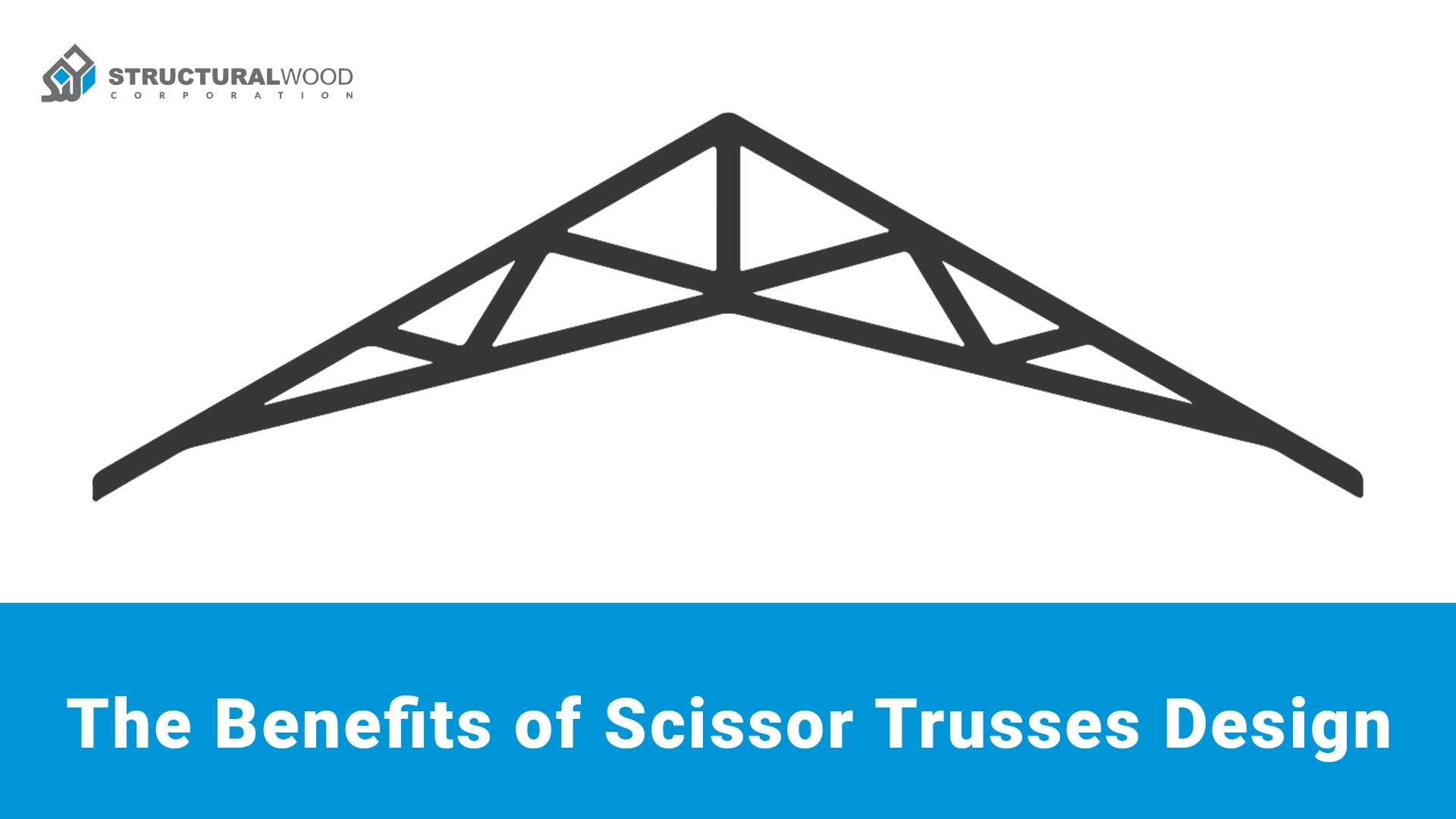Have you ever walked into a room and felt amazed by how open and bright it looks?
That impressive effect often comes from using scissor trusses on the roof.
Scissor trusses are a favorite in many new homes because they make rooms feel larger, bring in more light, and add a modern touch. Builders and homeowners love them because they are strong and easy to use.
In this guide, you will learn what makes scissor trusses special and how choosing this design can make your next building project stand out.
What is a Scissor Truss?

A scissor truss is a unique type of wooden frame used to support a roof, and it’s pretty clever in how it works. Instead of having flat bottom pieces (called chords), they cross each other and angle upward, meeting in the middle—kind of like an open pair of scissors. That’s actually where the name comes from!
This smart design naturally lifts the ceiling, giving the inside of a room a vaulted or raised look. It’s a great way to make a space feel more open and airy without needing extra materials or complicated construction.
Scissor trusses are just one option among many. If you’re exploring what might work best for your project, it’s worth checking out the different types of roof truss options available; each has its own purpose and benefits.
The Benefits of Scissor Trusses Design
1. Eye-Catching Interior Spaces
The best thing about using scissor trusses is how they completely change the feel of a room. Instead of a low, flat ceiling, you get a beautiful vaulted ceiling that draws the eye upward and gives the whole space a fresh, open look.
Even a small room can feel much bigger and brighter with this design. The extra height adds character and makes any area feel more inviting.
Tip: Vaulted ceilings are great for living rooms, dining areas, and even commercial spaces where you want to impress visitors.
2. Strong, Durable, and Reliable
Scissor trusses are designed to handle the real weight and pressure that a roof must support. The way they are built helps spread the load evenly, which makes them sturdy and dependable for many types of buildings.
You can trust these trusses to stand up to heavy roofing materials, strong winds, and other challenges that come with different weather conditions.
Builders and homeowners appreciate that scissor trusses are made to last, giving you peace of mind that your roof will stay safe and secure for years to come.
Note: Always use a scissor truss manufacturing specialist for custom designs to ensure strength and reliability.
3. Easy to Install

One of the reasons builders like scissor trusses is how simple they make the construction process. Since these trusses are often made in a factory ahead of time, they arrive at the building site already shaped and ready to use. This brings several big advantages:
- Less cutting and measuring are needed at the site, which saves time and reduces effort.
- Fewer steps mean there are fewer chances for mistakes or errors.
- Installers can lift each truss into place quickly, making the whole roof-building process much faster.
- With the hard work already done at the factory, labor costs can be lower, and projects stay on schedule.
Scissor trusses offer a smart way to keep construction easy and efficient, whether you are building a new home or working on a commercial project.
4. Simple Maintenance

Keeping your roof in good shape is easier with scissor trusses. The open layout of these trusses gives you better access to everything above the ceiling, such as roofing materials, electrical wiring, and insulation.
This design makes routine checks and small repairs much simpler, since there are fewer tight spaces to work around.
Homeowners and maintenance crews appreciate how easy it is to spot problems early and fix them quickly, helping your roof last longer and keeping your building safe and comfortable.
Reminder: Regular inspection extends the life of your roof and keeps repair costs low.
5. Customizable for Any Project
Scissor trusses are a great choice because they can fit so many different styles and building needs. If you dream of a grand, cathedral-style ceiling or prefer something with just a gentle rise, scissor trusses can be adjusted to match your vision.
You can choose the height, angle, and length that best suits your space. This flexibility means scissor trusses work well in both homes and larger buildings like halls, offices, or churches. No matter your project, there is almost always a way to make scissor trusses fit perfectly.
Customization Options for Scissor Trusses
| Customization Aspect | Options Available | Benefit |
| Height | Low, medium, or high-ceiling | Creates the ceiling look you want |
| Pitch (Angle) | Low, Medium, High | Matches your roof style |
| Span (Length) | Short to long | Fits small rooms or wide spaces |
| Finish | Exposed timber, painted, hidden | Matches your interior design |
| Materials | Pine, oak, LVL, glulam | Gives strength and style choices |
Note: Typical maximum span ranges from 24 to 60 feet, depending on design.
6. Efficient Span and Cost Savings
Another big advantage of scissor trusses is their ability to stretch across long distances without needing extra support columns in the middle of the room.
This means you can enjoy wide, open spaces in your home or building, which is great for large living areas, halls, or commercial spaces.
By reducing the need for extra beams or posts, you can also save money on materials and labor during construction.
Warning: The final cost depends on span, pitch, wood type, and local labor rates. Always get a quote from a trusted supplier.
Scissor Trusses vs. Regular Trusses: Quick Comparison
Not sure which truss design is right for your project?
Here is a simple side-by-side comparison to help you see how scissor trusses and regular flat trusses stack up in the areas that matter most:
| Feature | Scissor Truss | Regular (Flat) Truss |
| Ceiling Shape | Vaulted, sloped | Flat |
| Aesthetic Appeal | High | Standard |
| Max Span (Residential) | Up to 60 feet* | 30-40 feet* |
| Installation Speed | Fast | Fast |
| Maintenance | Easy | Easy |
| Customization | High | Medium |
| Cost | Moderate to High | Low to Moderate |
*Actual spans depend on design, materials, and engineering.
Note: For complex roofs, consult scissor truss manufacturing specialists for accurate span calculation and design support.
Struggling with span limits or code compliance on your roof designs? Our Roof Truss Design Guide shows you how to pick the perfect size, avoid costly redesigns, and keep your project on spec every time.
Conclusion
Scissor trusses are strong, attractive, and flexible. Whether you want high ceilings that impress or a reliable roof that covers a large space, this design works great. They are easy to install, simple to maintain, and can be customized to fit your exact needs. Because of these benefits, scissor trusses are a popular choice in modern construction.
Curious if scissor trusses are right for your project? Get in touch with Structural Wood Corporation to discuss your options and receive a quote.
FAQs
What Is The Purpose Of A Scissor Truss?
The purpose is to create a vaulted ceiling while providing strong structural support for the roof.
How Far Can You Span A Scissor Truss?
Most residential scissor trusses can span between 40 and 60 feet, depending on design and materials.
Are Scissor Trusses Stronger Than Regular Trusses?
Yes, scissor trusses can be stronger than regular trusses, especially for wide spans. Their angled bottom chords help spread loads more efficiently, making them well-suited for larger or more open spaces.
How Do I Calculate The Span For My Project?
It depends on roof pitch, loads, and materials, so it’s best to work with a structural engineer or scissor truss expert.
Can Scissor Trusses Be Customized?
Absolutely! You can pick the pitch, span, materials, and finish to match your style and needs.
Are Scissor Trusses Easy To Install And Maintain?
Yes, especially if pre-made. Their open design also makes inspections and repairs simpler.
What Do Scissor Trusses Cost?
Costs vary by size, design, materials, and labor. They may cost a bit more than regular trusses but add extra value with style and space.

